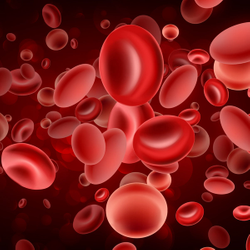Teclistamab Shows Viability in Anti-BCMA–Pretreated Multiple Myeloma
Prior BCMA-DT exposure was associated with a trend toward worse PFS outcomes and a lower likelihood of response in patients with multiple myeloma.
Patients treated with prior BCMA-DT had a numerically lower objective response rate at 48.7% vs 61.5% in those treated without prior BCMA-DT.

Teclistamab-cqyv (Tecvayli) displayed treatment viability for patients with multiple myeloma previously exposed to BCMA-directed therapy (BCMA-DT), according to results from a multicenter study from the US Multiple Myeloma Immunotherapy Consortium published in Blood Cancer Journal.
Safety results revealed that among patients previously exposed to prior BCMA-DT who received teclistamab, the total incidence of cytokine release syndrome (CRS) was 56%, with 3 patients (1.5%) experiencing grade 3 CRS and no grade 4 or higher CRS events observed. Additionally, the median time to CRS onset and to maximum CRS was 3 days. Furthermore, in the same cohort, the incidence of immune effector cell–associated neurotoxicity syndrome (ICANS) was 12%, including 3% of patients experiencing grade 3 ICANS events and no grade 4 or higher events observed.
At 30 days post treatment, the rates of grade 3 or higher anemia, neutropenia, and thrombocytopenia among patients treated with prior BCMA-DT were 6%, 7%, and 11%, respectively. A trend toward a higher grade 3 or higher thrombocytopenia rate in the prior BCMA-DT cohort was observed vs those who did not receive prior BCMA-DT (P = .08). Additionally, a documented infection rate of 39% vs 47% occurred in the respective arms (P = .1).
Regarding responses to therapy, patients treated with prior BCMA-DT had a numerically lower objective response rate (ORR) at 48.7% vs 61.5% in those treated without prior BCMA-DT (P = .012). The very good partial response rate was 39.4% in the former arm vs 52.6% in the latter arm (P = .009), and the complete response (CR) or better rate was similar between each respective arm at 22.3% vs 24% (P = .78). In a multivariate analysis, a nonsignificant reduction in ORR was observed in the BCMA-DT arm (HR, 0.64; 95% CI, 0.41-1.01; P = .057).
Furthermore, in the prior BCMA-DT arm, response rates were higher among those who received chimeric antigen receptor T-cell therapy (n = 129) at a rate of 51% vs 48% in those whose most recent prior BCMA-DT was an antibody-drug conjugate (n = 56) and 12.5% in those who received bispecific antibodies (n = 8). The respective CR or better rates were 25.5%, 16%, and 12.5%.
“Prior BCMA-DT exposure was associated with a trend toward worse PFS and a lower likelihood of attaining an overall response, although these findings did not reach statistical significance. The timing of teclistamab initiation relative to the last BCMA-DT exposure appears to be important, with intervals exceeding 9 months linked to improved PFS,” Danai Dima, MD, physician and assistant professor of the Clinical Research Division of Fred Hutch Cancer Center and of the Division of Hematology and Oncology at the University of Washington School of Medicine, wrote in the publication with study coinvestigators.1 “Altogether, our findings support the use of teclistamab as a viable treatment option in patients with prior BCMA-DT exposure, especially if the prior BCMA-DT was not a bispecific antibody.”
The retrospective analysis included 385 patients with relapsed/refractory multiple myeloma and included 193 (50%) who received prior BCMA-DT. Patients received subcutaneous teclistamab at step-up doses of 0.06 mg/kg and 0.3 mg/kg followed by a full dose of 1.5 mg/kg.
In the prior BCMA-DT and no prior BCMA-DT groups, the median age was 67 years (IQR, 60.4-71.2) vs 68.3 years (IQR, 61-75.7), with female patients accounting for 47% vs 47% of each arm. A total of 70.5% vs 62% of patients were White, and 91% vs 93% were non-Hispanic. Furthermore, 76% vs 73% had an ECOG performance status of 0 to 1.
In each respective group, 61% vs 49% had high cytogenetic risk, including 24% vs 18% with double-hit multiple myeloma. A total of 86.5% in the prior BCMA-DT arm and 81% of the no prior BCMA-DT arm had triple-class refractory disease. The median number of prior lines in each arm was 7 (range, 6-9) vs 5 (range, 4-6), and prior autologous stem cell transplantation occurred in 80% vs 52% of each arm.
The study graded CRS and ICANS incidence according to the American Society for Transplantation and Cellular Therapy criteria, with hematologic toxicities graded according to the Common Terminology Criteria for Adverse Events v5.0. Responses to therapy and disease progression were assessed using the International Myeloma Working Group criteria.
After a median follow-up of 9.9 months (95% CI, 9.5-10.6) for the entire cohort, the median progression-free survival among patients with or without prior BCMA-DT exposure was 4.6 months (95% CI, 2.7-7.5) vs 8.2 months (95% CI, 5.7-12.2; P = .017). A nonsignificant trend suggesting worse PFS with prior BCMA-DT exposure was observed in multivariate analysis (HR, 1.23; 95% CI, 0.94-1.61; P = .13). Furthermore, the estimated 6-month and 1-year overall survival rates in the respective arms were 69.3% (95% CI, 65.1%-78.2%) vs 71.3% (95% CI, 65.1%-78.2%) and 58.9% (95% CI, 51.64%-67.2%) vs 65.1% (95% CI, 58.1%-73.1%), respectively (P = .16).
Reference
Dima D, Vazquez-Martinez MA, Davis JA, et al. Outcomes of teclistamab in patients with relapsed/refractory multiple myeloma with prior exposure to BCMA-directed therapy: a multicenter study from the U.S. Multiple Myeloma Immunotherapy Consortium. Blood Cancer J. 2025;15(1):111. doi:10.1038/s41408-025-01314-9